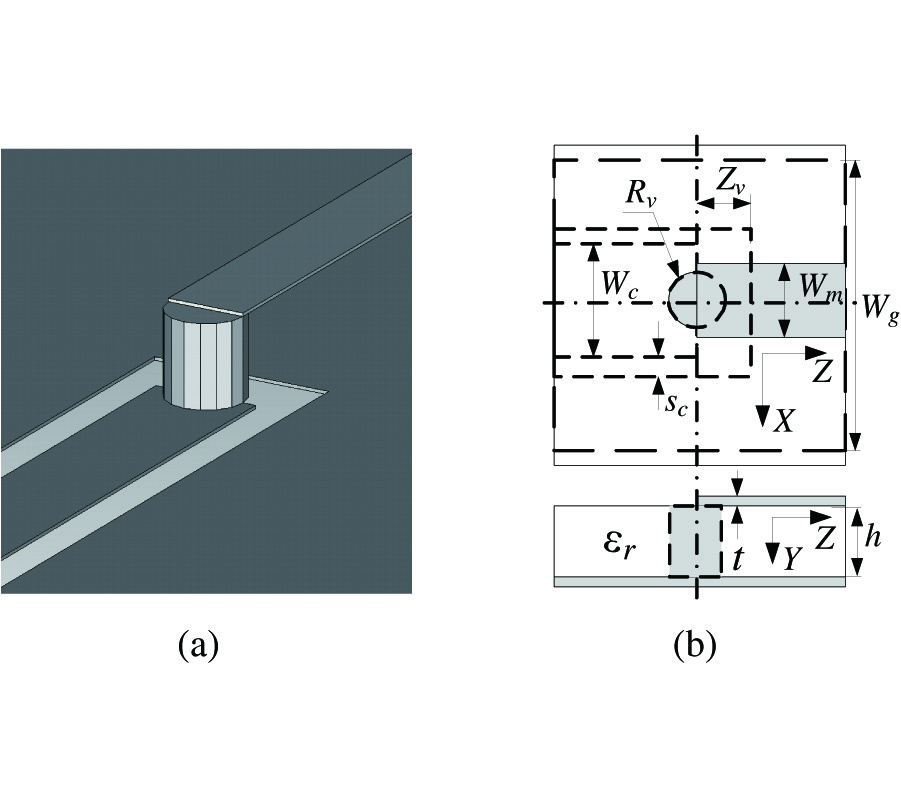Vol. 21
Latest Volume
All Volumes
PIERB 110 [2025]
PIERB 109 [2024]
PIERB 108 [2024]
PIERB 107 [2024]
PIERB 106 [2024]
PIERB 105 [2024]
PIERB 104 [2024]
PIERB 103 [2023]
PIERB 102 [2023]
PIERB 101 [2023]
PIERB 100 [2023]
PIERB 99 [2023]
PIERB 98 [2023]
PIERB 97 [2022]
PIERB 96 [2022]
PIERB 95 [2022]
PIERB 94 [2021]
PIERB 93 [2021]
PIERB 92 [2021]
PIERB 91 [2021]
PIERB 90 [2021]
PIERB 89 [2020]
PIERB 88 [2020]
PIERB 87 [2020]
PIERB 86 [2020]
PIERB 85 [2019]
PIERB 84 [2019]
PIERB 83 [2019]
PIERB 82 [2018]
PIERB 81 [2018]
PIERB 80 [2018]
PIERB 79 [2017]
PIERB 78 [2017]
PIERB 77 [2017]
PIERB 76 [2017]
PIERB 75 [2017]
PIERB 74 [2017]
PIERB 73 [2017]
PIERB 72 [2017]
PIERB 71 [2016]
PIERB 70 [2016]
PIERB 69 [2016]
PIERB 68 [2016]
PIERB 67 [2016]
PIERB 66 [2016]
PIERB 65 [2016]
PIERB 64 [2015]
PIERB 63 [2015]
PIERB 62 [2015]
PIERB 61 [2014]
PIERB 60 [2014]
PIERB 59 [2014]
PIERB 58 [2014]
PIERB 57 [2014]
PIERB 56 [2013]
PIERB 55 [2013]
PIERB 54 [2013]
PIERB 53 [2013]
PIERB 52 [2013]
PIERB 51 [2013]
PIERB 50 [2013]
PIERB 49 [2013]
PIERB 48 [2013]
PIERB 47 [2013]
PIERB 46 [2013]
PIERB 45 [2012]
PIERB 44 [2012]
PIERB 43 [2012]
PIERB 42 [2012]
PIERB 41 [2012]
PIERB 40 [2012]
PIERB 39 [2012]
PIERB 38 [2012]
PIERB 37 [2012]
PIERB 36 [2012]
PIERB 35 [2011]
PIERB 34 [2011]
PIERB 33 [2011]
PIERB 32 [2011]
PIERB 31 [2011]
PIERB 30 [2011]
PIERB 29 [2011]
PIERB 28 [2011]
PIERB 27 [2011]
PIERB 26 [2010]
PIERB 25 [2010]
PIERB 24 [2010]
PIERB 23 [2010]
PIERB 22 [2010]
PIERB 21 [2010]
PIERB 20 [2010]
PIERB 19 [2010]
PIERB 18 [2009]
PIERB 17 [2009]
PIERB 16 [2009]
PIERB 15 [2009]
PIERB 14 [2009]
PIERB 13 [2009]
PIERB 12 [2009]
PIERB 11 [2009]
PIERB 10 [2008]
PIERB 9 [2008]
PIERB 8 [2008]
PIERB 7 [2008]
PIERB 6 [2008]
PIERB 5 [2008]
PIERB 4 [2008]
PIERB 3 [2008]
PIERB 2 [2008]
PIERB 1 [2008]
All Journals
Road Pavement Density Analysis Using a New Non-Destructive Ground Penetrating Radar System
Mardeni Bin Roslee,
Raja Syamsul Azmir Raja Abdullah and
Helmi Zulhaidi Shafr
Density is an important parameter to determine the strength of road, and it will ensure the safety of the use as well as maintaining the quality of road pavement. In this paper, the validation of GPR mixture model based on the microwave nondestructive free space method to determine the density of road pavement typed Hot Mix Asphalt (HMA) will be presented. The frequency range of operation used is 1.7-2.6 GHz. The attenuation is a major factor for gathering the density of road pavement predictably. The existing mixture model has been used to produce simulation data for determining the predicted complex permittivity and attenuation due to various densities of road pavement. The GPR laboratory measurement is performed where the measured attenuation due to various densities was obtained. The comparison results between measurement and simulation were investigated, and the relative errors in between were calculated to see the performance of the model. The best performance of mixture model was selected in the optimization technique due to the smallest mean error. An improved attenuation formula or optimized mixture model was obtained from the optimization technique to produce the better model. The finding from the optimization process suggested that three additional constant parameters which are volume factor, permittivity factor and attenuation factor need to be included to improve the existing mixture model. The optimized mixture model is introduced as GPR mixture model in this work. The validation process at field test had been conducted to evaluate the performance of optimized GPR model and produce the error range from 3.3% and 4.7%. At the end of this project, the GPR mixture model can be used as a calibration curve where the values of predicted density of a given real road pavement can be read directly once the attenuation values are known.

Characteristics of Electromagnetic Wave Propagation through
a Magnetised Plasma Slab with Linearly Varying Electron Density
Çiğdem Seçkin Gürel and
Emrah Öncü
Characteristics of electromagnetic wave propagation through a magnetized plasma slab with linear electron density profile is analysed. In the numerical analysis, cold, weakly ionized, collisional and steady state plasma layer is divided into sufficiently thin, adjacent subslabs, in each of which plasma parameters are constant. Reflection and transmission coe±cients are calculated for discretised plasma by considering electron density profile with positive and negative slopes. Wideband absorbtion characteristic is obtained with high collision frequency and high electron density combination in linearly decreasing profile as well as wideband transmission characteristic is obtained for low collision frequency and low electron density combination in linearly increasing profile of finite length. The general results show that in steady state, plasma layer behaves as a frequency selective medium satisfying the major requirements of current shielding applications as the function of plasma parameters and the strength of external magnetic field excitation. Proposed plasma layer can be used in current shielding and stealth applications as a matching layer between the surface and the incident electromagnetic wave.

Flexible Hollow Waveguide with Two Bendings for Small Values of Step Angles, and Applications
Zion Menachem
This paper presents an improved approach for the propagation of electromagnetic (EM) fields in the case of the exible hollow waveguide that consists of two bendings in the same direction. In this case, the objective is to develop a mode model for infrared (IR) wave propagation along the exible hollow waveguide, in order to provide a numerical tool for the calculation of the output fields, output power density and output power transmission. The main steps of the method for the two bendings will introduced in the derivation, in detail, for small values of step angles. The derivation for the first section and the second section of the waveguide with the two bendings is based on Maxwell's equations. The separation of variables is obtained by using the orthogonal-relations. The longitudinal components of the fields are developed into the Fourier-Bessel series. The transverse components of the fields are expressed as functions of the longitudinal components in the Laplace plane and are obtained by using the inverse Laplace transform by the residue method. This model can be a useful tool in all the cases of the hollow toroidal waveguides, e.g., in medical and industrial regimes.
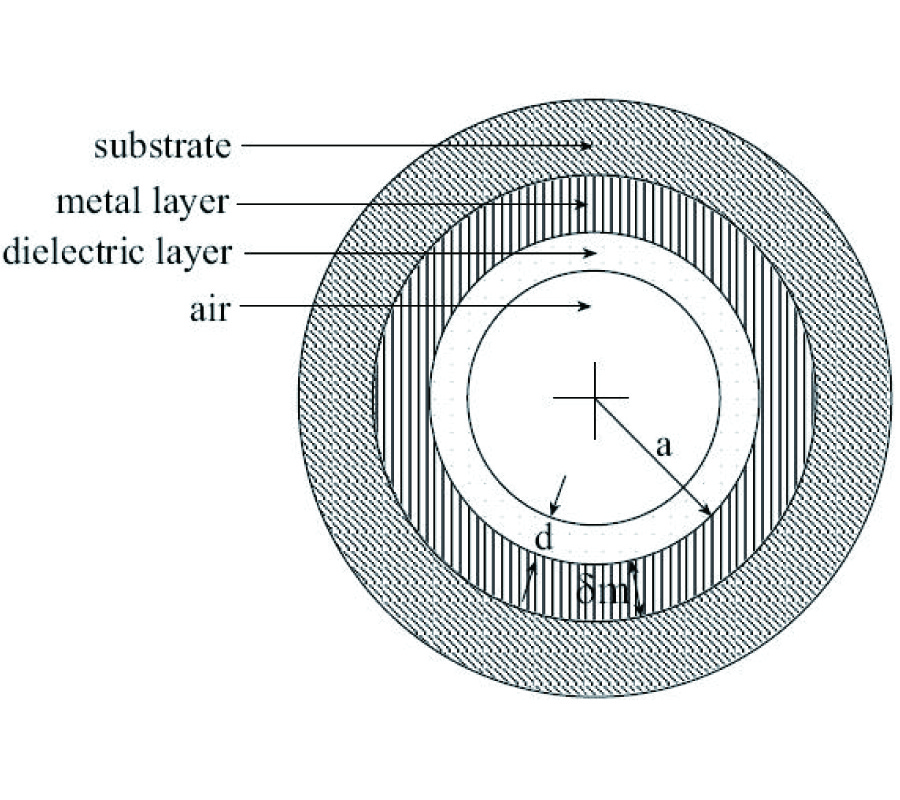
Focal Region Fields of Cassegrain System Placed in Homogeneous Chiral Medium
Muhammad Qasim Mehmood,
Muhammad Junaid Mughal and
Tariq Rahim
In this paper the high frequency electromagnetic field expressions for two dimensional Cassegrain system embedded in a chiral medium are presented. Due to failure of Geometrical Optics (GO) at the caustic region, Maslov's method is used to find the field expressions. Two different cases have been analyzed. Firstly, the chirality parameter (kβ) is adjusted to support positive phase velocity (PPV) for both left circularly polarized (LCP) and right circularly polarized (RCP) modes traveling in the medium. Secondly, kβ is adjusted such that one mode travels with PPV, and the other mode travels with negative phase velocity (NPV). The results for both cases are presented in the paper.
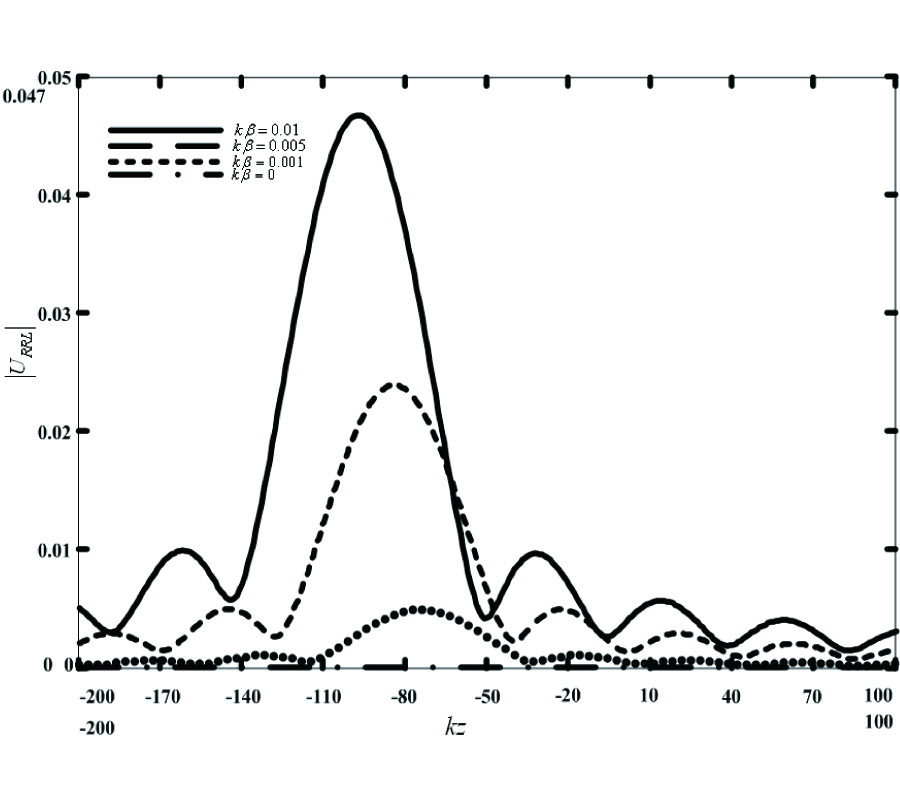
Analytical Methods in the Theory of Thin Impedance Vibrators
Mikhail Nesterenko
The advantages and disadvantages of more extended approximated analytical methods of the integral equations solution for the current in thin perfectly conducting and impedance vibrators have been investigated in details in this paper. The solutions of the problem about the electromagnetic waves scattering by the thin vibrators with the distributed surface impedance, obtained with the help of the method of expansion of the searched function for the current in a series on small parameter. The method of consistent iterations and asymptotic averaging method are given. The comparison of the calculated results with the experimental data in the case of excitation of the vi-brator in the centre by the point source of voltage is represented.

Microstrip Patch Antenna Optimization Using Modified Central Force Optimization
Gubran M. Qubati and
Nihad I. Dib
Central force optimization (CFO) is a new simple deterministic multi-dimensional search evolutionary algorithm (EA) inspired by gravitational kinematics. This paper evaluates CFO's performance and provides further examples on its effectiveness. A new scheme, the acceleration clipping, is introduced, which enhances CFO's global search ability while maintaining its simplicity. The improved CFO algorithm is applied to the optimal design of two different wideband microstrip patch antennas. Specifically, a microstrip line fed E-shaped patch antenna and a coaxial line fed double-E-shaped patch antenna are designed and optimized using the CFO method. CFO's performance on these antennas is compared to that of the differential evolution (DE) optimization. Both the CFO and DE methods are interfaced with the full-wave IE3D software. It is found that the CFO results are very close to those obtained using the DE technique.
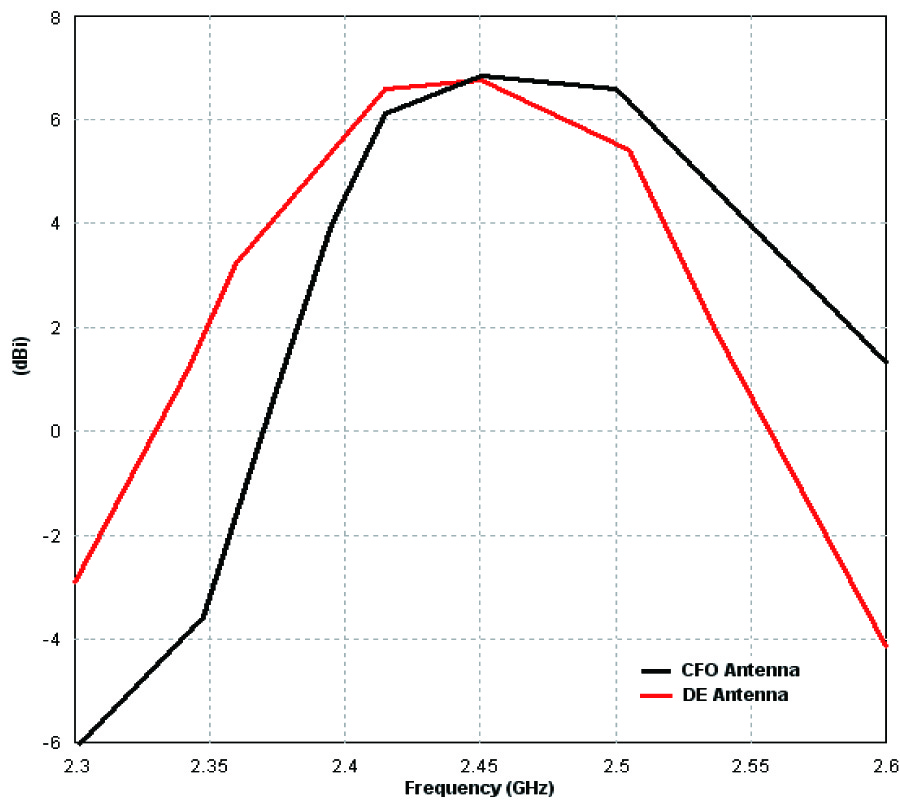
Synthesis of Difference Patterns for Monopulse Antennas with Optimal Combination of Array-Size and Number of Subarrays --- a Multi-Objective Optimization Approach
Siddharth Pal,
Swagatam Das,
Aniruddha Basak and
P. N. Suganthan
Monopulse antennas form an important methodology of realizing tracking radar. They are based on the simultaneous comparison of sum and difference signals to compute the angle-error and to steer the antenna patterns in the direction of the target (i.e., the boresight direction). In this study, we consider the synthesis problem of difference patterns of monopulse antennas in the framework of Multi-objective Optimization (MO). The synthesis problem is recast as an MO problem (for the first time, to the best of our knowledge), where the Maximum Side-Lobe Level (MSLL) and Beam Width (BW) of principal lobe are taken as the two objectives to be minimized simultaneously. The approximated Pareto Fronts (PFs) are obtained for different number of elements and sub-arrays using a recently developed and very competitive Multi-Objective Evolutionary Algorithm (MOEA) called MOEA/D-DE that uses a decomposition approach for converting the problem of approximation of the PF into a number of single objective optimization problems. This algorithm employs Differential Evolution (DE), one of the most powerful real parameter optimizers in current use, as the search method. The quality of solutions obtained is compared with the help of the trade-off graphs (plots of the approximated PF) generated by MOEA/D-DE on the basis of the two objectives to investigate the dependence of the number of array-elements and the number of sub-arrays on the final solution. Then we find the best compromise solutions for 20 element arrays and compare the results with standard single-objective algorithms such as the Differential Evolution (DE) and Particle Swarm Optimization (PSO) and hybrid techniques like Hybrid Contiguous Partition Method (HCPM) that has been reported in literature so far for the synthesis problem. Our experimental results indicate the MOEA/D-DE yields much better final results as compared to the standard single-objective and hybrid approaches over all the test cases covered here.
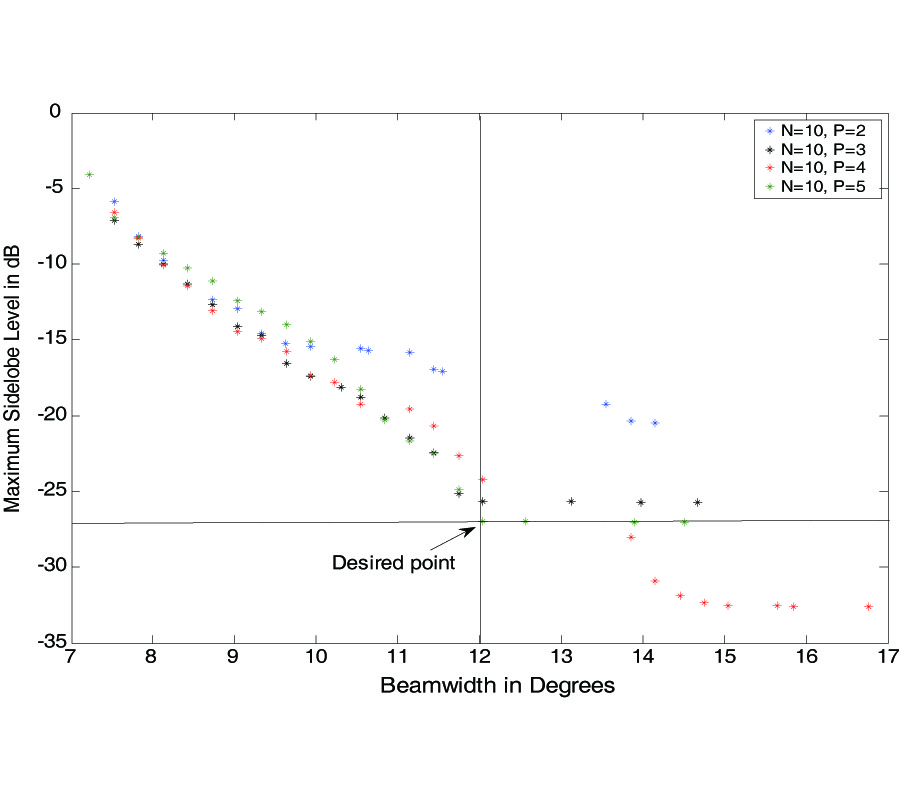
Optical Effects on the Characteristics of a Nanoscale Finfet
R. Ramesh,
M. Madheswaran and
K. Kannan
The effect of optical radiation on a uniformly doped nanoscale FinFET considering quantum mechanical effects has been theoretically examined and analyzed. The device characteristics are obtained from the self-consistent solution of 3D Poisson-Schrödinger equation using interpolating wavelet method. To our best knowledge this is the first approach for the self-consistent solution to surface potential computations of nanoscale FinFET photodetector using interpolating wavelets. This method provides more accurate results by dynamically adjusting the computational mesh and scales the CPU time linearly with the number of mesh points using polynomial interpolation, hence reducing the numerical cost. A fine mesh can be used in domains where the unknown quantities are varying rapidly and a coarse mesh can be used where the unknowns are varying slowly. The results obtained for dark and illuminated conditions are used to examine the performance of the device for its suitable use as a photodetector.

Adaptively Adjusted Design Specifications for Efficient Optimization of Microwave Structures
Slawomir Koziel
Novel and computationally e±cient method for optimization of microwave structures is presented. The technique is based on the adjustments of the design specifications and exploits the coarse model --- computationally cheap representation of the structure being optimized, e.g., equivalent circuit. It is demonstrated that the proposed approach allows rapid design improvement while being simple to implement. Limitations and modifications of the technique are also discussed.
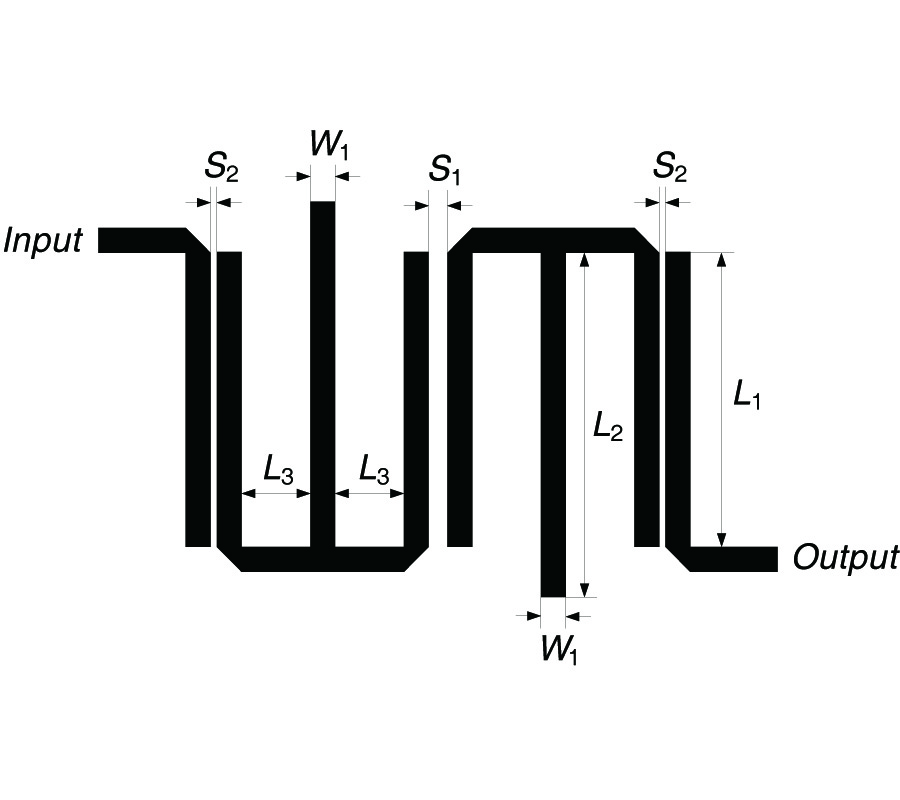
Integral Method for a Capacitance Microscope That Is Based on Cylindric Metallic Surfaces
Alberto Mendoza-Suarez and
Francisco Villa-Villa
In this work we consider the problem of obtaining a capacitive image by scanning a "one-dimensional" surface of a closed conductor of arbitrary geometry. To solve our problem we propose a novel integral numerical method. The method is applied to different geometries by considering deterministic surfaces as complex as those with a fractal structure and random rough surfaces with Gaussian statistics. We find that the images obtained by simulating a prototype of a capacitive microscope, strongly depend on the interaction between the object and the probe. Despite this interaction, important information can be obtained regarding the statistical properties of the random roughness of the object surface.
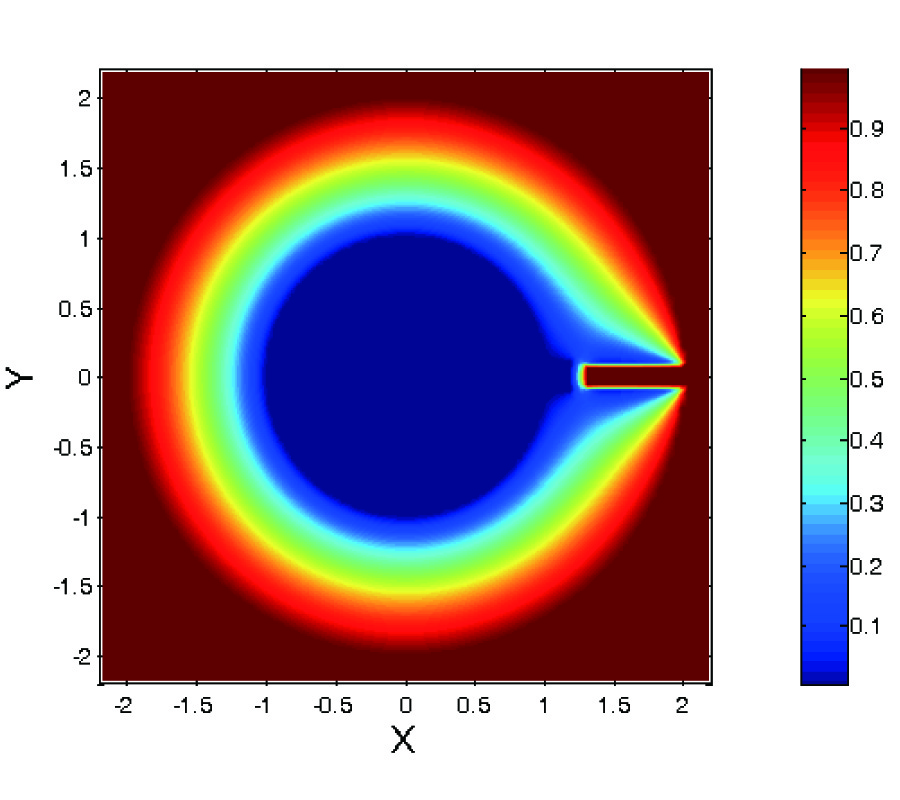
Higher Order Finite Element Method for Inhomogeneous Axisymmetric Resonators
Xi Rui,
Jun Hu and
Qing Huo Liu
To analyze resonances in an axisymmetric inhomogeneous cavity, a higher-order finite element method (FEM) is developed. Mixed higher-order node-based and edge-based elements are applied to eigenvalue analysis for the azimuthal component and meridian components of the field, respectively. Compared with the lower-order FEM, the higher-order FEM can improve accuracy with the same number of unknowns and can reduce the CPU time and memory requirement for specified accuracy. Numerical results are given to demonstrate the validity and efficiency of the proposed method.

Degree of Polarization of a Twisted Electromagnetic Gaussian Schell-Model Beam in a Gaussian Cavity Filled with Gain Media
Shijun Zhu and
Yangjian Cai
Analytical formula for the cross-spectral density matrix of a twisted electromagnetic Gaussian Schell-model (TEGSM) beam propagating through an astigmatic ABCD optical system in gain or absorbing media is derived based on the unified theory of coherence and polarization. Generalized tensor ABCD law in media is derived. As an application example, the evolution properties of the degree of polarization of a TEGSM beam in a Gaussian cavity filled with gain media are studied numerically in detail. It is shown that the behavior of the degree of polarization depends on the parameters of the gain media and the TEGSM beam. Our results will be useful for the spatial modulation of polarization properties of stochastic electromagnetic beam.
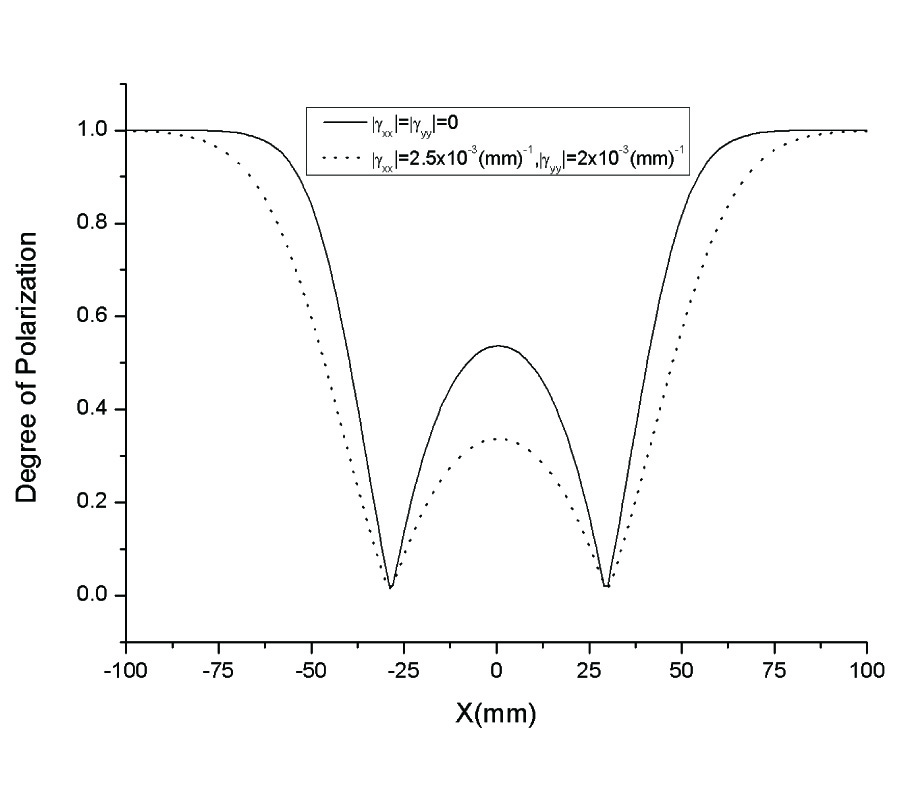
Efficient Electrically Small Oblate Spheroidal and Spherical Antennas in Shells with Negative Permittivity
Oleg B. Vorobyev
Electrically small oblate spheroidal and spherical antennas in confocal shells with negative permittivity represent perspective antenna design to combine moderately small size, wide bandwidth, high e±ciency and power of radiation. However, optimization of the antennas performance parameters imposes contradictory restrictions on permittivity of the shells, electrical size of the antennas, shape of the antennas and shells. Simulation results based on method of eigen-functions have shown that the antennas can be tuned on resonance for small magnitudes of negative permittivity of the shells and antiresonance for higher magnitudes. Optimal combination of power and efficiency of radiation of the antenna and the quality factor is obtained in an intermediate range of negative permittivity by combining merits of resonance and antiresonance of the antenna. Antiresonant range of the oblate spheroidal antenna emerges for lower permittivity magnitudes as compared with the spherical antenna. As a result, the optimal size of the shell of oblate spheroidal antenna is comparatively small. However, more gradual emerging of antiresonant properties of the spherical antenna makes spherical design more suitable for higher level of inherent absorption of the shell medium with negative permittivity.

Scattering of Monochromatic Electromagnetic Waves on 3D-Dielectric Bodies of Arbitrary Shapes
Sergey Kanaun
The work is devoted to the problem of scattering of monochromatic electromagnetic waves on heterogeneous dielectric inclusions of arbitrary shapes. For the numerical solution of the problem, the volume integral equation for the electric field in the region occupied by the inclusion is used. Discretization of this equation is carried out by Gaussian approximating functions. For such functions, the elements of the matrix of the discretized problem are calculated in explicit analytical forms. For a regular grid of approximating nodes, the matrix of the discretized problem proves to have the Toeplitz structure, and the matrix-vector product with such matrices can be carried out by the Fast Fourier Transform technique. The latter strongly accelerates the process of the iterative solution of the discretized problem. Electric fields inside a spherical inclusion and its differential cross-sections are calculated and compared with the exact (Mie) solution for various wave lengths of the incident field. Internal electric fields and the differential cross-sections of a cylindrical inclusion are calculated for the incident fields of various directions and wave lengths.

Plane Wave Scattered by n
Dielectric Coated Conducting Strips Using Asymptotic Approximate Solution
Hassan Ragheb and
Essam Hassan
The paper aims at solving the problem of plane electromagnetic waves scattered by N dielectric coated conducting strips. The method used is based on an asymptotic technique introduced by Karp and Russek for solving scattering by wide slit. The technique assumes the total scattered field from each coated strip as the sum of the scattered fields from the individual element due to a plane incident wave plus scattered fields from factious line sources of unknown intensity located at the center of every element. The line sources account for the multiple scattering effect. By enforcing the boundary conditions, the intensity of the line sources can be calculated. Numerical examples are introduced for comparison with data published in the literature.

Linear Antenna Array Synthesis with Constrained Multi-Objective Differential Evolution
Siddharth Pal,
Boyang Qu,
Swagatam Das and
P. N. Suganthan
Linear antenna array design is one of the most important electromagnetic optimization problems of current interest. In contrast to a plethora of recently published articles that formulate the design as the optimization of a single cost function formed by combining distinct and often conflicting design-objectives into a weighted sum, in this work, we take a Multi-objective Optimization (MO) approach to solve the same problem. We consider two design objectives: the minimum average Side Lobe Level (SLL) and null control in specific directions that are to be minimized simultaneously in order to achieve the optimal spacing between the array elements. Our design method employs a recently developed and very competitive multi-objective evolutionary algorithm called MOEA/D-DE that uses a decomposition approach for converting the problem of approximation of the Pareto Fronts (PF) into a number of single objective optimization problems. This algorithm employs Differential Evolution (DE), one of the most powerful real parameter optimizers in current use, as the search method. As will be evident from the shape of the approximated PFs obtained with MOEA/D-DE, the two design-objectives are in conflict and usually, performance cannot be improved significantly for one without deteriorating the other. Unlike the single-objective approaches, the MO approach provides greater flexibility in the design by yielding a set of equivalent final solutions from which the user can choose one that attains a suitable trade-off margin as per requirements. We illustrate that the best compromise solution attained by MOEA/D-DE can comfortably outperform state-of-the-art single-objective algorithms like Genetic Algorithm (GA), Particle Swarm Optimization (PSO), Tabu Search Algorithm (TSA), and Memetic Algorithm (MA). In addition, we compared the results obtained by MOEA/D-DE with those obtained by one of the most widely used MO algorithm called NSGA-2 and another generic multi-objective DE variant that uses non-dominated sorting, on the basis of the Rindicator, hypervolume indicator, and quality of the best trade-off solutions obtained.

On the System Modeling of Antennas
Yvan Duroc
With the emergence of UWB systems and, in particular, the pulsed modulations, the modeling of antennas as Linear Time Invariant (LTI) systems has been studied in the last years extensively. This approach offers the advantage of modeling the antennas in frequency domain as well as in time domain. Further, the performance in terms of dispersion is taken into account implicitly in the modeling. This paper presents and compares methods in order to model antennas as LTI systems. The models are analyzed and discussed: physical interpretations are specified; differences between the models are highlighted; alternatives are proposed; advantages and drawbacks of approaches are emphasized.
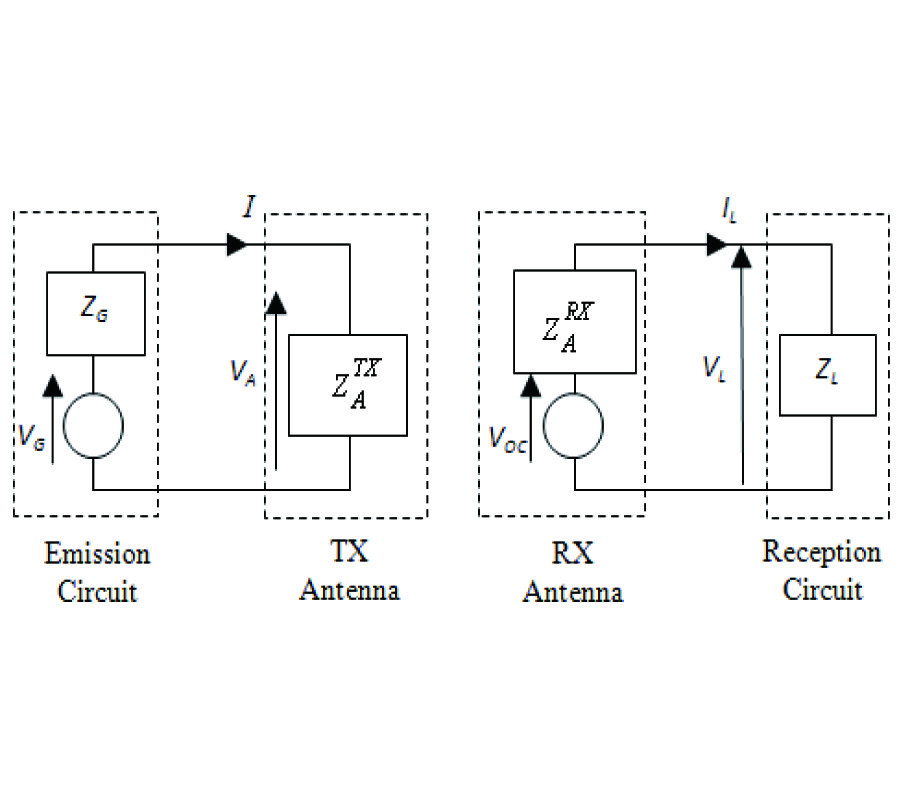
Coupling Coefficients of Resonators in Microwave Filter Theory
Vladimir V. Tyurnev
This paper is an overview of important concepts and formulas involved in the application of coupling coefficients of microwave resonators for the design of bandpass filters with a particular emphasis on the frequency dispersion of coupling coefficients. The presumptions and formulas are classified into accurate, approximate, and erroneous ones.
Estimation of Error Induced by a Crossed-Dipole Probe in the Near-Field
Paramesha and
Ajay Chakraborty
The Moment Method is used to estimate the error induced by a compact measuring probe in the near-field. A crossed-dipole is used as a compact near-field measuring probe of a waveguide radiator in an infinite ground plane, since it measures both co-pole and cross-pole components simultaneously. However, due to multiple reflections between radiator and probe, in addition, mutual coupling effects between the poles, near-field values are changed. The relative sampled electric field pattern (without the probe) is compared to the relative sampled co-pole voltage pattern in the scan plane and the induced error is computed. The radiating waveguide's reflection coefficient is altered with respect to the reflection coefficient when there is no probe in the near-field. The numerical results concerning the reflection coefficient without the probe are compared to the measured values, and good agreement is observed.
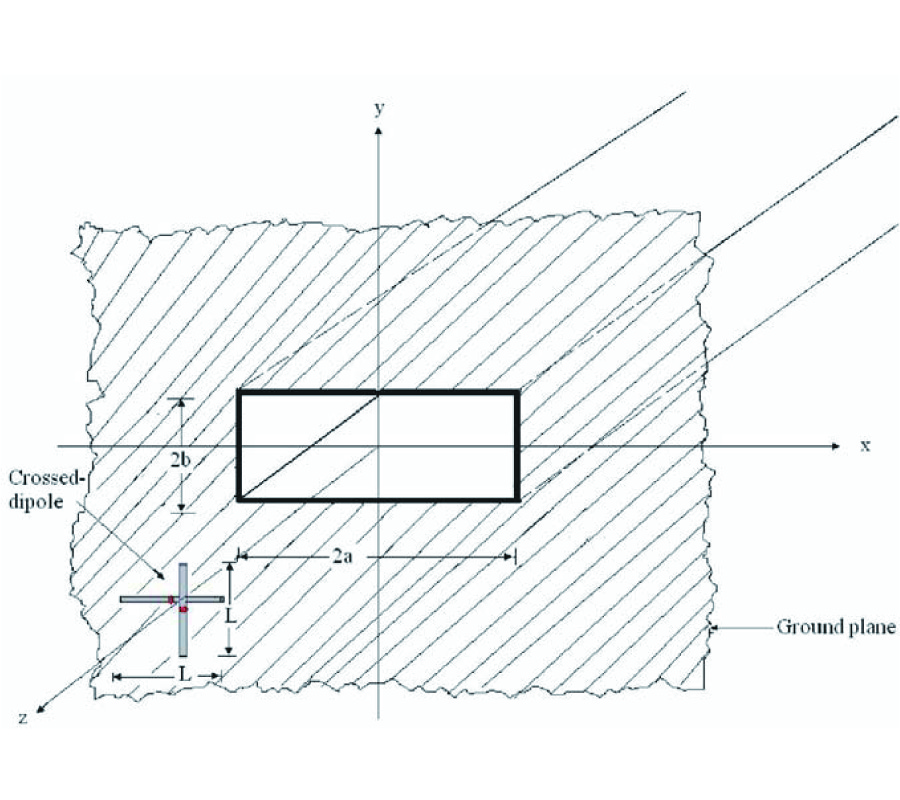
Variable-Fidelity Design Optimization of Microwave Devices Using Multi-Dimensional Cauchy Approximation and Coarsely Discretized Electromagnetic Models
Slawomir Koziel,
Stanislav Ogurtsov and
Mohamed H. Bakr
Application of multi-dimensional Cauchy approximation and coarse-discretization electromagnetic (EM) models to surrogate-based optimization of microwave structures is discussed. Space mapping is used as an optimization engine with the surrogate model constructed as a Cauchy approximation of the coarsely discretized device EM model. The proposed approach allows us to perform computationally efficient optimization of microwave structures without using circuit-equivalent coarse models traditionally exploited by space mapping algorithms. We demonstrate our technique through design of a range of microwave devices, including filters, antennas, and transitions. Comprehensive numerical verification of the proposed methodology is carried out with satisfactory designs obtained --- for all considered devices --- at a computational cost corresponding to a few fullwave simulations.
